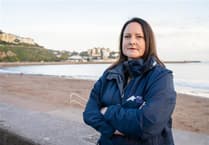Immediately after Christmas, the government gave the South Hams a new housing target. Instead of building 555 homes each year, the district must now deliver at least 910.
As a result, SHDC no longer meets the requirement to demonstrate a five-year housing land supply. This means the current Joint Local Plan (JLP) is considered out of date, and the national presumption in favour of sustainable development now applies.
“This changes our decision-making processes,” said the District Council’s head of strategic planning, Phil Baker, in a report to the Executive. “We are more vulnerable to speculative development proposals on unallocated land and it puts the local planning authority in a reactive position, rather than using the JLP to provide a plan-led framework for managing change.”
He warned that the new position could also mean accepting fewer affordable homes on new developments and losing out on other policy and financial contributions.
The risk is particularly acute in the South Hams’ most sustainable towns and villages, which Baker said had already grown “to the extent that they can without unduly influencing or constraining the way that those places function”. Yet these are the very areas most likely to attract speculative applications.
There is clearly a need to adopt a new Joint Local Plan. But Plymouth has already said it will not take part.
Meanwhile, local government reorganisation is on the horizon. South Hams and West Devon could soon be part of a new unitary council.
Cllr John Birch raised concerns: “If there is a 1-4-5, how are Teignbridge and Torbay going to accept what South Hams and West Devon have come up with?"
He continued: “What really does worry me is that we’re not going to be in existence at the time when the Plan is put forward for adoption. We could be embarking on an exercise that will leave a very sour taste… because at the end of the day, the Plan will have to identify sites throughout South Hams where new development is going to take place.
“Do we want to leave a legacy of being the Council that set out where unacceptable future development is going to be?” he asked. “That would be ok if we were to have a say in the final determination. So there are too many risks. I think we need to think of another option.”
Cllr Julian Brazil sympathised. “At the same time as we’re meant to be producing new Local Plans, they’re getting rid of the Local Plan areas. So it’s totally chaotic.
“We could take the view that we don’t want to do the Plan and take each application as it comes.” But, he concluded, that was not a real solution.
Phil Baker explained that a “constraints mapping exercise” would inform a new housing requirement. This would follow a new call for sites and allow the Council to argue for a locally appropriate target.
Cllr O’Callaghan said early assessments suggest the number could be reduced to between 500 and 600 homes a year once constraints are considered.
Even then, she noted, those numbers would still fall far short of delivering the affordable homes the area needs.
Nonetheless, except for Cllr Birch, the Executive voted to begin work on a new Joint Local Plan with West Devon, likely the right decision, though whether it remains so after reorganisation is uncertain.





Comments
This article has no comments yet. Be the first to leave a comment.